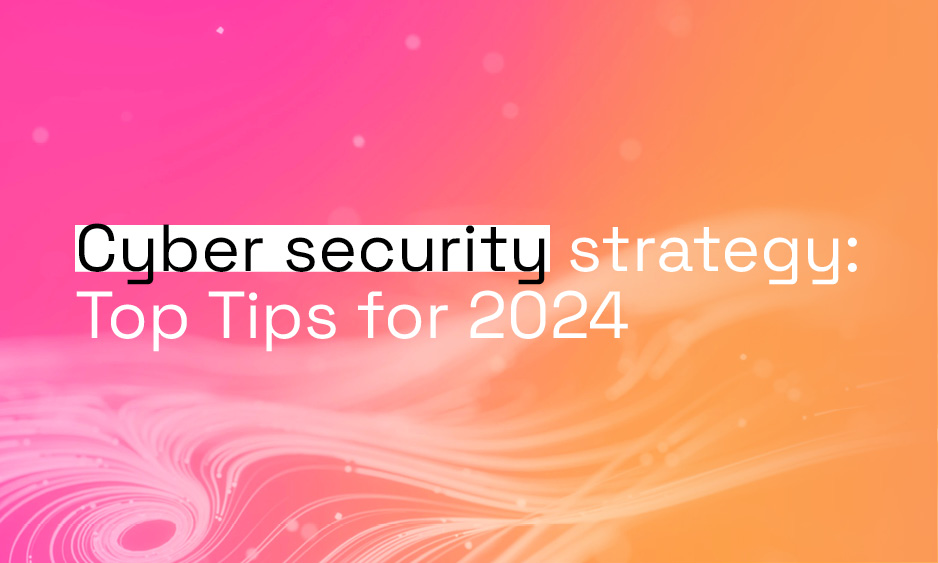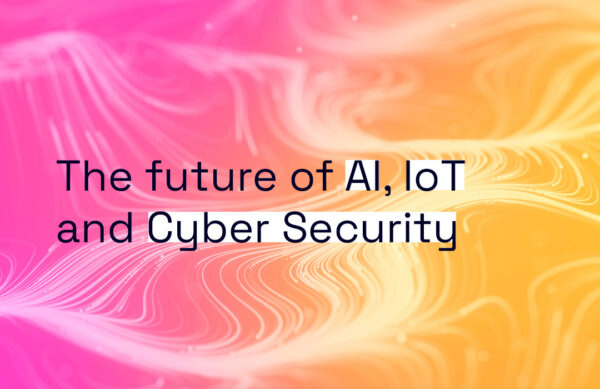Technology continues to weave its way into the fabric of our daily lives, transforming the way we work, communicate and navigate the world around us. As we step into 2024, the ongoing integration of technology is bringing both unparalleled connectivity and even greater security risks.
The benefits of a hyper-connected workplace are clear, but planning for a secure connected future is now a necessity. The pace of technological change can at times move faster than traditional security frameworks, making it essential for organisations to be proactive in managing cyber security.
In this article we will explore some of the challenges and opportunities that the interconnected workplace presents in 2024, as well as the strategies and proactive steps required to thrive. From understanding the intricacies of our technology-driven lives to implementing robust security measures, now is the time for strategic planning to ensure that we remain not only seamlessly connected but also protected against emerging threats.
The power of connectivity in the workplace
Connectivity tools have fundamentally altered the way teams collaborate and businesses operate. Cloud-based tools have become the norm, enabling instant communication and fostering collaboration amongst remote or geographically dispersed teams. Video conferencing platforms have transformed traditional boardroom meetings into virtual events that enhance efficiency.
The roll-out of 5G technology is bringing lightning-fast data transfer speeds and reducing latency, laying the groundwork for the seamless integration of emerging technologies like augmented reality (AR) and virtual reality (VR) into the business ecosystem.
Similarly, the rise of the Internet of Things (IoT) has also brought about a shift to business operations. From smart offices that optimise energy consumption to intelligent supply chain management systems that track products in real-time, IoT is weaving a web of connectivity that enhances overall efficiency and decision-making. Interconnected devices enable businesses to gather valuable data, optimise processes and make more informed decisions.
Navigating the opportunities and challenges of greater connectivity
While this surge in connectivity brings plenty of opportunities for businesses, it also comes with several challenges, including an increased risk of cyber threats and data breaches. As we move through 2024, businesses must continue to invest in robust cyber security to safeguard sensitive information and maintain the trust of their stakeholders.
More interconnectedness also means there is greater need for skilled professionals who can navigate the complexities of a connected business environment. Organisations must invest in training and development initiatives to ensure the workforce is equipped with the skills necessary to harness the full potential of advanced connectivity.
Preparing for evolving cyber security threats
The landscape of cyber security is constantly evolving, as malicious actors continue to devise sophisticated techniques to exploit vulnerabilities. Understanding emerging cyber security threats is not just a concern for IT professionals, but rather it’s a critical aspect of safeguarding the very foundation of our digital existence.
No longer confined to viruses and malware, cyber threats now include a wide range of tactics. From ransomware attacks that encrypt valuable data to phishing schemes designed to deceive even the most vigilant users, the threat landscape has expanded in both scale and complexity.
The rise of artificial intelligence (AI) and machine learning has not only empowered cyber security defences but has also given cyber criminals the tools to craft more adaptive and targeted attacks. These evolving threats mean remaining vigilant and continually updating defence systems.
“As we move through 2024, businesses must continue to invest in robust cyber security to safeguard sensitive information and maintain the trust of their stakeholders.”
A proactive approach to cyber security
In the face of these dynamic challenges, taking proactive security measures and a forward-thinking approach is critical. This includes regular security audits, vulnerability assessments and the implementation of robust cyber security frameworks. Employing cutting-edge technologies like AI and machine learning in cyber security tools can enhance the ability to predict, detect and mitigate emerging threats before they wreak havoc.
Fostering a cyber security culture within organisations is more important than ever. Training employees to recognise and report potential threats, practicing good cyber hygiene and promoting joint responsibility for cyber security all contribute to a more resilient defence.
Anticipating trends in connectivity and cyber security for 2024
Successful planning and future-proofing requires a deep understanding of emerging trends in connectivity and cyber security. In 2024, we anticipate a continued surge in 5G adoption, an escalation of Internet of Things (IoT) applications and an evolving cyber threat landscape.
Keeping on top of these trends is essential for organisations seeking to stay ahead of the curve and proactively address potential challenges.
- Securing devices and data in a connected environment. Securing devices and data requires implementing best practices such as encryption for data at rest, multi-factor authentication, regular software updates and secure configuration settings. By adhering to these practices, individuals and organisations can create layers of defence to help reduce the risk of unauthorised access and data breaches.
- Robust network security helps protect connected systems. At the core of a secure future lies robust network security. Safeguarding interconnected systems requires firewalls, intrusion detection/prevention systems and encryption protocols to fortify data in transit. This not only protects sensitive information but also ensures the integrity and availability of services.
- Regular security assessments and updates. Proactive measures such as conducting thorough assessments, including vulnerability scans and penetration testing, help to identify potential weaknesses. Timely software updates and patch management ensure that known vulnerabilities are addressed quickly. Agile planning, coupled with the ability to swiftly adapt to emerging technologies and threats, positions organisations to not only survive but thrive in 2024.
- Importance of user education and awareness in maintaining security. Informed users are the first line of defence against social engineering attacks and phishing attempts. Training programs that emphasise the significance of strong passwords, two-factor identification, recognising suspicious activities and reporting security concerns empower individuals to actively contribute to a secure digital environment and help to foster collective responsibility for cyber security.
- Evolving government regulation and compliance. Government regulations and compliance standards are evolving to address the growing complexity of digital ecosystems. Organisations must stay informed about changing regulations, ensuring that all operations align with updated compliance requirements.
The role of Managed Service Providers (MSPs) in staying ahead. MSPs play a crucial role in helping organisations stay ahead of the curve in connectivity and cyber security. Leveraging the expertise of MSPs allows businesses to access cutting-edge technologies, benefit from proactive monitoring and threat detection, and offload the complexity of managing evolving infrastructures. This strategic partnership enables organisations to focus on their core competencies while staying resilient in the face of digital challenges.
“Leveraging the expertise of MSPs allows businesses to access cutting-edge technologies, benefit from proactive monitoring and threat detection, and offload the complexity of managing evolving infrastructures. This strategic partnership enables organisations to focus on their core competencies while staying resilient in the face of digital challenges.”
A secure future hinges on integrating the key components that form a resilient cyber security infrastructure. This includes robust network security, stringent device and data protection measures, routine security assessments and an informed workforce. By addressing these strategies collectively, organisations and individuals can build a comprehensive defence against evolving cyber threats.
In summary, planning and future-proofing in the rapidly changing digital landscape of connectivity and cyber security requires a holistic approach. By anticipating trends, implementing proactive strategies, adapting to evolving regulations and leveraging the expertise of MSPs, organisations can not only navigate the complexities of 2024, but also position themselves for success.
As part of our commitment to robust cyber security, we’ve embraced Zero Trust as a fundamental principle in our network architecture. Find out how we can help you implement Zero Trust and build a more secure network by reaching out to our team today.




